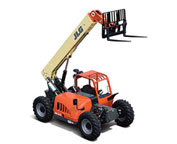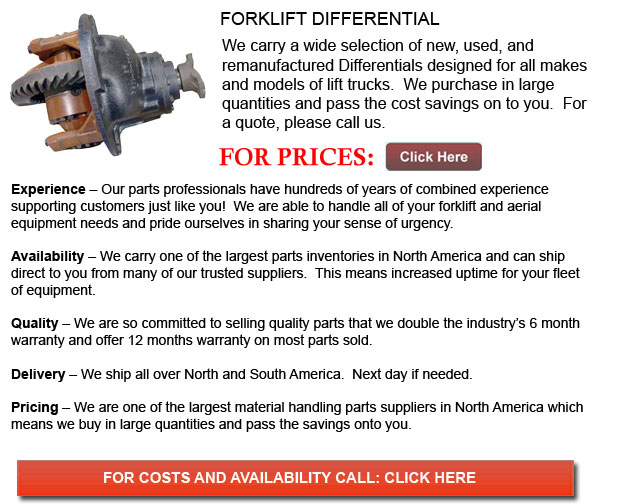
Differential for Forklifts - A mechanical machine capable of transmitting torque and rotation through three shafts is referred to as a differential. Every so often but not always the differential will use gears and would work in two ways: in cars, it receives one input and provides two outputs. The other way a differential operates is to combine two inputs in order to produce an output that is the difference, sum or average of the inputs. In wheeled vehicles, the differential allows each of the tires to be able to rotate at various speeds while providing equal torque to each of them.
The differential is intended to drive the wheels with equivalent torque while likewise allowing them to rotate at different speeds. If traveling round corners, the wheels of the cars would rotate at different speeds. Some vehicles like karts operate without a differential and use an axle as a substitute. When these vehicles are turning corners, both driving wheels are forced to rotate at the identical speed, normally on a common axle which is powered by a simple chain-drive apparatus. The inner wheel should travel a shorter distance than the outer wheel while cornering. Without utilizing a differential, the consequence is the outer wheel dragging and or the inner wheel spinning. This puts strain on drive train, resulting in unpredictable handling, difficult driving and damage to the roads and tires.
The amount of traction required in order to move whichever automobile will depend upon the load at that moment. Other contributing elements consist of momentum, gradient of the road and drag. Among the less desirable side effects of a traditional differential is that it can limit grip under less than perfect conditions.
The torque provided to each and every wheel is a result of the transmission, drive axles and engine applying a twisting force against the resistance of the traction at that specific wheel. The drive train could normally provide as much torque as necessary except if the load is extremely high. The limiting factor is commonly the traction under every wheel. Traction could be interpreted as the amount of torque which could be produced between the road exterior and the tire, before the wheel begins to slip. The vehicle will be propelled in the planned direction if the torque used to the drive wheels does not go over the threshold of traction. If the torque utilized to every wheel does go over the traction threshold then the wheels will spin continuously.
![]() Click to Download the pdf
Click to Download the pdf
Forklift Parts








Lift Parts Express
TOLL FREE: 1-888-695-7994
LOCAL: (623) 900-4309
4980 S Alma School Rd A2-247
Chandler, Arizona
forkliftpartschandler.com
Email Us
About Us



